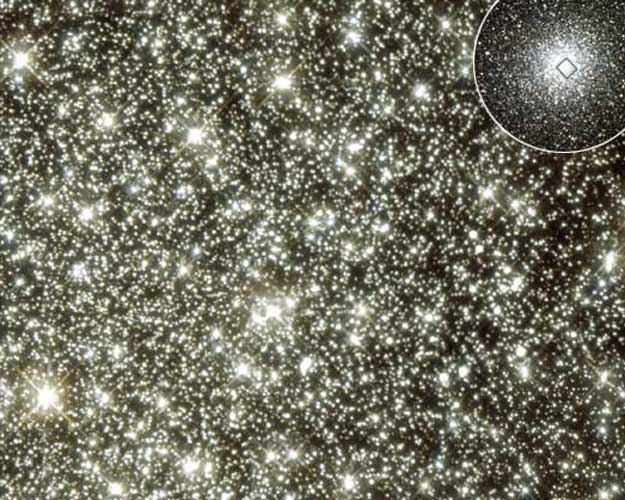Explanation: What is causing the unusual flashes behind globular cluster M22? This teaming ball of stars is the brightest globular cluster visible in Earth's northern hemisphere. M22, shown in full in the inset, spans about 50 light years away and lies 8500 light-years toward the constellation of Sagittarius. M22's center was recently imaged repeatedly by the high resolution Hubble Space Telescope. Behind M22 are many more stars near the center of our Galaxy. Unexpectedly, several stars near the Galactic center -- well behind M22 -- appeared to nearly double in brightness and return to normal within 20 hours. One hypothesis posed to explain these quick brightness changes is the gravitational lens effect of large planets roaming freely in the cluster. One problem with this is that there was no such planetary population was previously known! Future observations are planned to better understand these mysterious flashes.
1999 2000 2001 2002 2003 2004 2005 2006 2007 2008 2009 2010 2011 2012 2013 2014 2015 2016 2017 2018 2019 2020 2021 2022 2023 2024 2025 |
Январь Февраль Март Апрель Май Июнь Июль Август Сентябрь Октябрь Ноябрь Декабрь |
NASA Web Site Statements, Warnings, and Disclaimers
NASA Official: Jay Norris. Specific rights apply.
A service of: LHEA at NASA / GSFC
& Michigan Tech. U.
|
Публикации с ключевыми словами:
Микролинзирование - microlensing - M 22 - вспышки
Публикации со словами: Микролинзирование - microlensing - M 22 - вспышки | |
См. также:
Все публикации на ту же тему >> | |
